Study Zoo keeping, Animal Health Care, Animal Behaviour, Vertebrate Zoology and much more.
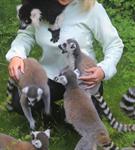 A very solid foundation in animal science and management relating to working with wild animals.
A very solid foundation in animal science and management relating to working with wild animals.- Improve career advancement prospects.
- Expand opportunities to work with animals.
- Use Course Counselling Service to communicate with our animal science tutors before making decisions about careers or studies.
COURSE STRUCTURE AND CONTENT
- Course Duration: 900 hours.
- Start Date: Start at any time - study at a pace that suits you, and with full tutor support for the duration of your studies.
- Modules: The course comprises 5 Core Modules, plus 4 Elective Modules. Students will study a total of 9 modules.
FORMING RELATIONSHIPS WITH ANIMALS
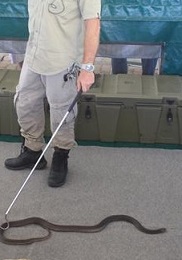 Part of being a zoo keeper, involves forming relationships with the animals in your care. Irrespective of whether those animals are small or large, harmless or dangerous; the people who care for them need to understand the their behaviours and the psychology that underpins their formation of relationships.
Part of being a zoo keeper, involves forming relationships with the animals in your care. Irrespective of whether those animals are small or large, harmless or dangerous; the people who care for them need to understand the their behaviours and the psychology that underpins their formation of relationships.
Forming a relationship is almost always easier if the animal is young; but that is not always going to be the situation you find yourself in.
Here are some examples of specialised forms of learning that affect relationship development in animals.
Imprinting
This behaviour is a special process of attachment that can only occur during a specific short critical or sensitive period when an animal is born. It is said to occur when innate behaviours are released in response to a learnt stimulus with the purpose of promoting survival of newborn animals and of influencing their future breeding activities.
It was first described by Karl Lorenz who studied a group of Greylag geese. He observed that there is a brief period when the goslings are first born where they will huddle together but then become attracted to objects around them. In nature this will usually be the mother who leads them away from the nest but in the absence of the mother, Lorenz showed that the geese would follow and ‘imprint’ on him. It has subsequently been shown that ducks and geese will imprint on inanimate objects such as balls or boots. Although the dominant sense involved in imprinting is sight, sound and olfaction are also important.
pImprinting seems to be more important in precocial species (where the young are mobile soon after birth) which need to be able to stay with a moving parent for protection, rather than those where the mother stays at the nest or place of birth whilst the young are being fed.
It has most commonly been described in ducks and geese but it has also been observed in horses. Newborn foals will follow any large moving object (including humans) if the mare does not rise quickly after foaling. Mares may have developed a tendency to guard their foals against other animals or people who approach so as to prevent them from following the wrong animal.
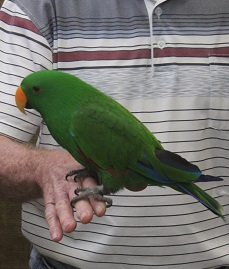 Imprinting-like phenomena are also involved in the social development of other mammals. Orphan lambs reared by humans will follow the humans about and may show little attraction towards other sheep. However, they may transfer their attention to other moving objects such as dogs, which suggests that the attachment is not as strong as imprinting in birds.
Imprinting-like phenomena are also involved in the social development of other mammals. Orphan lambs reared by humans will follow the humans about and may show little attraction towards other sheep. However, they may transfer their attention to other moving objects such as dogs, which suggests that the attachment is not as strong as imprinting in birds.
True imprinting is generally considered to be irreversible and the knowledge is retained for life. It can also influence the choice of mate, particularly in male birds who will seek out a partner who closely resembles the ‘mother’ that they imprinted on.
Maternal Bonding
The bond formed between the mother and her offspring is vital to ensure the survival of the young. Olfaction has a much greater influence in the bonding process although sight and hearing are also important. The timing of this is crucial during which the mother must accept her newborn and start lactation and maternal care. It is known that in many mammals including sheep, goats and cattle, the mother must smell and lick her young within the first hour of birth otherwise she will reject them.
The practice of fostering an orphan lamb onto a ewe whose lamb has died by covering it with the skin of the dead lamb and hence its familiar smell has long been used by farmers to help the ewe accept the strange lamb. Contact between a cow and her calf for just a 5 minute period after birth will lead to a strong bond. This strong reliance on smell should also be considered when handling very young animals as any strange ‘human’ scent may cause the mother to reject her offspring, especially in rodents.
Sows and piglets also use smell to identify each other but may take a few days to learn. Piglets can be fostered onto a sow until approximately two days after farrowing. After this time she will reject them on the basis of smell. Also piglets that are older than two days will vocalise and be reluctant to suckle a foster sow, as they have already made an attachment with their own mother.
In general, species that produce litters are more willing to accept and foster young, than those that produce one or two offspring. This is probably because the mother cannot discriminate so readily between individual offspring.
Socialisation
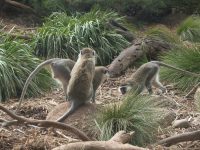
All young mammals pass through a developmental stage known as the socialisation period. This critical period occurs when the young animal’s sensory, motor and thermoregulatory systems are fully operational and they learn to move away from their mother and interact with others of the same and different species. This period varies according to species. In dogs it is from 3-10 weeks, in cats 2-7 weeks whilst in primates it is 6-12 months.
During this sensitive stage, they are open to new social encounters. They learn about communication and appropriate social interaction. Later, as the socialisation period draws to a close, they become increasingly wary of strangers and novel situations. The social experiences during this critical period set them up to differentiate friend from foe for the rest of their lives. The socialisation period of wild cats and wolves lasts only a few days, after which the animal becomes fearful of anyone that doesn't look like its mother or litter mate. However, with domestic dogs and cats, this period seems to have got much longer.
WORKING IN WILDLIFE MANAGEMENT or ZOO KEEPING
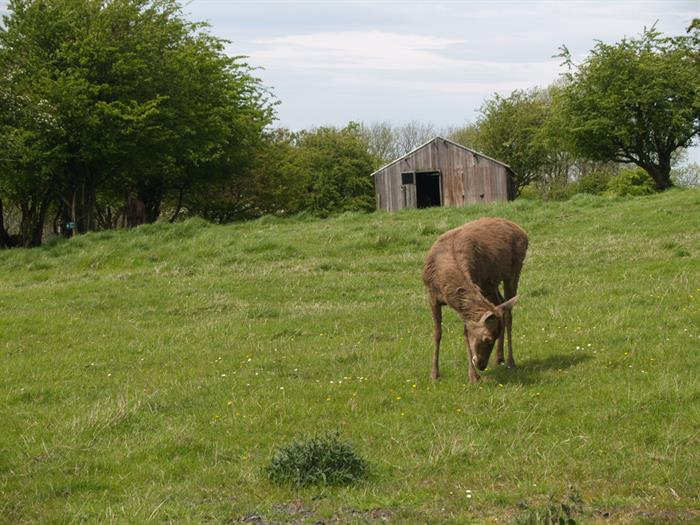 If you are considering Wildlife Management or Zoo Keeping as a career, you are probably aware that it is a highly competitive field, with many more applicants for jobs than the job market can absorb. Therefore, many nature parks, zoos and other employers can and do set quite demanding requirements for interested persons. In most situations, they require you to demonstrate your commitment to working with animals and your psychological suitability for such work through volunteering. This often applies to those with qualifications as well as those without, as not everyone who wants to work with animals has the personality or personal qualities for such work.
If you are considering Wildlife Management or Zoo Keeping as a career, you are probably aware that it is a highly competitive field, with many more applicants for jobs than the job market can absorb. Therefore, many nature parks, zoos and other employers can and do set quite demanding requirements for interested persons. In most situations, they require you to demonstrate your commitment to working with animals and your psychological suitability for such work through volunteering. This often applies to those with qualifications as well as those without, as not everyone who wants to work with animals has the personality or personal qualities for such work.
Jobs in wildlife management and zoo keeping may only be offered to volunteers and not advertised, and it is often the case that only those volunteers willing to work on a casual basis or on call will gain the jobs anyway, which can make it very difficult for volunteers who cannot afford to give up stable positions.
A qualification will certainly make you more attractive as a recruit, but it is usually not enough to gain you a job in this field, unless you are qualified for, and seeking a job that requires particular skills and knowledge, such as veterinary science. Our courses written by writers with experience and qualifications in this field, who have a good understanding of what is needed.
Why do we have Zoos?
With changing attitudes towards zoos over the recent decades, zoos have been forced to reconsider their purpose and function.
Zoos now have to justify their reasons for keeping animals in captivity. Many zoos now recognise three main reasons for keeping animals in zoos, other than for recreational purposes. These are:
- Conservation.
- Education.
- Research.
Research and Zoos
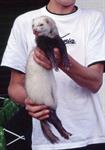 Having intimate access to a variety of animals, zoos are in the desirable position of being able to conduct research and acquire knowledge of these animals and how they live. Research undertaken in zoos is an important part of their conservation strategies. It is now a legal requirement in the UK for zoos to be involved in research that help meet conservation goals. Many of the larger zoos are involved in research which covers a wide range of areas such as
Having intimate access to a variety of animals, zoos are in the desirable position of being able to conduct research and acquire knowledge of these animals and how they live. Research undertaken in zoos is an important part of their conservation strategies. It is now a legal requirement in the UK for zoos to be involved in research that help meet conservation goals. Many of the larger zoos are involved in research which covers a wide range of areas such as
- Animal Health and Nutrition.
- Animal Behaviour.
- Animal Husbandry Techniques.
- Visitor Experiences.
- Cooperative Research into Conservation of Threatened Species.
- Recovery of Wildlife.
- Genetics.
- Reproduction.
- Self Assessment – how the zoo can improve particular functions.
Many zoos share their research information with other zoos and wildlife researchers. This is very important for the improved welfare of both captive and wild animals as well as increasing the effectiveness of zoos. Research can also form the basis for educational resources provided to zoo visitors and the general public.
HOW THE COURSE WORKS
You can start the course at any time.
It is studied by distance learning, so you can study in the comfort of your own home. But this doesn't mean you are all alone in your studies. Our highly qualified and friendly tutors are there to help you every step of the way. If you have any questions at all, they are always happy to help.
Each lesson includes set tasks, and is completed with an assignment which the student submits to their course tutor. The tutor will mark the assignment and return this to the student with comments and suggestions for further reading.
HOW THE ADVANCED CERTIFICATE IS ASSESSED
The Advanced Certificate In Zoo Keeping requires approximately 900 hours of study. It is made up of eight 100 hour modules and a workplace project lasting 100 hours
To pass the course –
- Pass all assignments on the eight 100 hour modules. There will be an assignment at the end of each lesson to submit to your tutor for marking and feedback.
- Pass eight examinations – one on each module. These are usually taken at the end of the module and can be arranged at a time and location to suit you.
- Complete a Workplace Project. The project should last around 100 hours. There are four options available to you to satisfy this requirement. Don’t worry if you are not sure at this stage, your tutor will be there to help you every step of the way. This includes evidence of work experience or other studies or workshops, a research project or completion of Workshop I.
WHY STUDY WITH ACS?
-
ACS is a well-established and independent distance learning school.
- Quality teaching - Our courses are written and taught by experienced professionals, so you know you can expect a high quality of teaching and support.
- Start at any time - You can start the course at any time and study at your own pace.
- Flexible studies - online or eLearning study options. Fit your studies around your own busy lifestyle; study where and you want to.
QUESTIONS?
Choosing the right course and the right options is important. If you have any questions, please get in touch with our Environmental tutors using our FREE COURSE COUNSELLING SERVICE. They will be more than happy to answer any questions you may have about our courses.